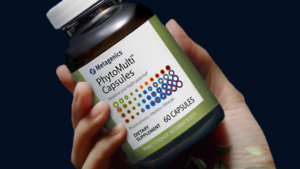After five years R&D development Mediacells has been awarded the trademark for Audience Engineering (AE), a generative insights system to inform performance decisions for rights owners and sponsors.
The Mediacells team wanted to use AE to produce a unique, creative identity.
The business intelligence agency decided to embark on a new creative path at the beginning of this year and six months later the campaign has now launched in what CEO Brad Rees claims is a “true, organic blend of the best of AI and UK digital craftsmanship.”
According to Rees, the first stop was to employ an AI explorer to assess generative AI content possibilities using Midjourney, ChatGPT, and a selection of bespoke brand development AI apps.
Rees said: ”It was never our intention to use the AI content as the ultimate output but it was a good focus for the team to zone in on the proposition. Using generative AI tools enabled us to get through the time-robbing phases of the campaign conception and allowed us to accelerate the direction rather than a destination.”
Collaborative milestones followed now that the data-driven creative direction had been plotted. Mediacells hired ex-head of Marketing for the FT, Yehuda Shapiro as the brand messaging consultant, who applied rigour to the communications by eliciting insights from the management team through a series of proposition sessions that lead to concrete, measurable objectives, deliverables, timelines and deadlines. Yehuda condensed a complex set of data disciplines to a sequence of five: Design, Engineering, Science, Analytics and Reporting.
Next stop was to recruit experienced print designer, Mark Willey, a print publishing veteran, to transform the draft AI visuals, colourways, fonts, logos etc. into a unified, meaningful brand identity with assets that could scale from social media graphics to skyscrapers 4K animations.
Embracing the generative AI offerings and influenced by 15th Century architectural isometric grids of Leonardo da Vinci, Mark provided the source content for the creative activations.
The visual impact had to be human and after much photo-questing – an image of audience delight presented itself at the eleventh hour.
The design element drew heavily from 1950s architectural blueprint tearsheets, which aimed to distance Audience Engineering‰ from the impersonal monolithic nature of data architecture. When it came to the heavy lifting element of data engineering a high-rise build feel projected solid foundations and rapid scale.
The scientific element of Audience Engineering referenced the Information is Beautiful books of David McCandless to conjure the infinite value of data in a single graphic. For the Analytics discipline Mark drew from Lewis Carroll’s Alice Through the Looking Glass, to show the transformation from Science to Analysis
Finally, the crystallisation of each sequence into a unified, meaningful whole concatenated each visual, from the foundations up, to show the power of complex audience data in the right hands.
The creative output was so powerful that Mediacells commissioned movie animators Reflective Films to take the vector illustrations Mark had produced and animate them into a reductive storyline. Stock audio backgrounds just felt too generic for such a significantly bespoke project – so Mediacells sourced a new Bristol band called Dope Inc. to licence an instrumental version of their track Colin Ancoats from their debut album, Dope! The song was engineered by ex-Charlatans producer and Candy Flip member, Ric Peet.








